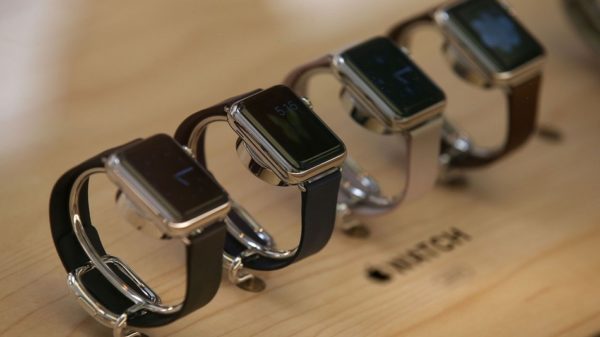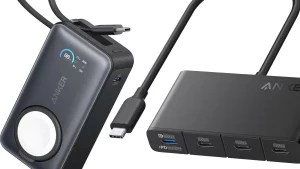Smartwatches leave fitness trackers in the dust in the growing wearable market

Smartwatches finally reign supreme in the wearable world.
The gadget segment saw a major increase in shipments over the last few months, according IDC’s latest wearables market report. Smartwatch shipments grew 60.9 percent in Q2 2017, a massive spike in consumer interest in a category that many were ready to give up on as recently as this April.
The smartwatch surge might have come to the detriment of the once-mighty “basic wearables” category, which covers gadgets that don’t run apps like step counters. The simple fitness trackers posted a loss for the first time ever, with a negative annual growth of -0.9 percent.
IDC senior research analyst Jitesh Ubrani implied as much, calling fitness trackers “a gateway to smartwatches,” and speculating that both brands and consumers are ready to start “graduating to a more sophisticated device.”
Consumers likely embraced smartwatches en masse this quarter because of a greater emphasis on niche markets, like fitness and fashion, according to IDC research manager Ramon Llamas. He also cited new standalone capabilities for the segment’s rise in popularity, as leaving home without a smartphone becomes more palatable with watches equipped with GPS tracking and payment features.
Smartwatches lead the wearables industry now, and that will likely continue for the foreseeable future.
The rapid expansion in the smartwatch segment meant that the overall wearables market continues to swell, even with the decline of fitness trackers. Wearable companies shipped 26.3 million units during Q2 2017 for 10.3 percent year over year growth. The upward trajectory isn’t unexpected, since the firm predicted a wearables renaissance going forward in its last market report.
The number one brand in the industry might come as a surprise, though: for the second straight quarter, Chinese brand Xiaomi beat out Apple and Fitbit for the top spot. Xiaomi doesn’t have much of a presence in Western markets, but its cheap, colorful fitness bands are popular in China.
Meanwhile, Fitbit and Apple are neck and neck, both shipping 3.4 million units in the quarter (Apple has a slight 0.1 percent edge on market share). That number looks much differently for the two companies, however; Fitbit is still on a downward slide since it was passed by Appleearlier this year, losing market share to competitors and shipping nearly 2.3 million fewer units than last year. Apple is ascending, shipping 1.1 million more Watches than last year.
Staying on top
Smartwatches lead the wearables industry now, and that will likely continue for the foreseeable future.
There’s a slew of high profile releases slated to hit the market in the coming months that could push shipments to new levels. Fitbit’s first true smartwatch, the Ionic, comes in October, while Samsung and Garmin just announced new fitness-focused products in their wearable lines.
The real excitement will likely come from Apple, which is expected to unveil a brand new LTE-connected Apple Watch at its keynote event on Sept. 12. The new feature could make the Watch a truly must-have product, driving massive sales and interest in smartwatches in general.
Plans to make smartwatches more applicable for health and wellness could lead to even more growth, according to Ubrani, who said the medical industry has a “growing interest” in using wearables to collect data. Fitbit hopes to use the Ionic’s new SpO2 sensors to detect sleep apnea, while the Apple Watch has already been used to detect a common heart condition and is rumored to be developing a continuous glucose monitor to combat diabetes.
Smartwatches are proof that sometimes it takes a while for technology to catch on. Now that consumers are more comfortable with the gadgets sitting on their wrist, the segment will only see greater levels of success.












